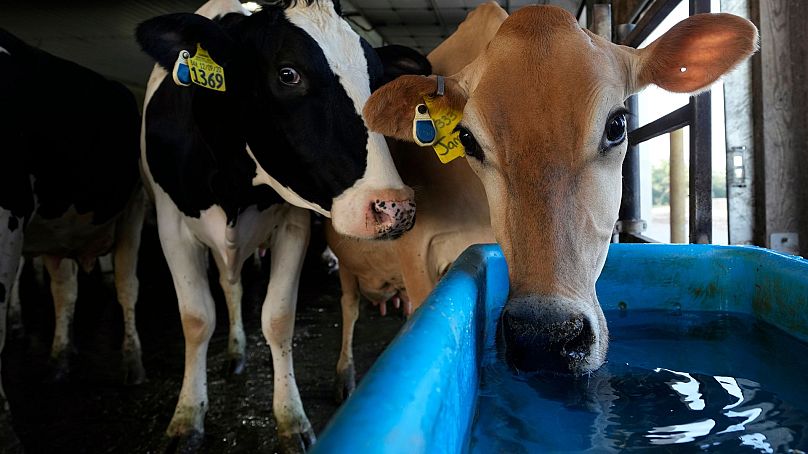Heatwaves and animal welfare: The ethics of livestock farming on a warming planet

Heat stress hits livestock too: How can we adapt our food systems for better animal welfare?
Europe recently sweltered through its hottest July on record.
The human impacts on work, tourism and health were clear to see. But behind closed doors, animals kept as livestock also suffered from severe heat stress.
New data obtained by UK publisher Carbon Brief exposes the devastating impact of extreme heat on farmed animals during last summer’s soaring temperatures.
In July 2022, the UK reached 40°C for the first time on record. On that day, almost 10,000 chickens died from heat stress in a single journey to a slaughterhouse, Carbon Brief reports.
Between June and August 2022, 18,500 chickensdied in transport, compared to 325 in the same period the previous year.
Pigs, too, felt the heat with at least a dozen deaths in one case leading to “cannibalistic behaviours” among the animals.
The alarming figures shine a light on the cramped, poorly ventilated conditions suffered by animals in transport and on farms, and the pressing need to address them as temperatures continue to rise.
But could the solutions exacerbate the cause?
Cooling solutions use an ‘insane’ amount of energy
The global food system is already a major contributor to greenhouse gas emissions, accounting for around one-third of all human-caused output, according to UN estimates.
About a fifth of emissions come from animal-based food products, says Atul Jain, a professor in the department of atmospheric sciences at The University of Illinois Urbana-Champaign, who studies the interactions between climate and human activities like agriculture.
Unless we significantly reduce emissions, the planet is on track to keep warming.
One of the simplest ways to reduce hot, cramped transport conditions is putting fewer animals on each truck – meaning more vehicles on the road, and more emissions.
On the farms, meanwhile, tech designed to regulate temperatures also guzzles gas.
“Fans and misters… are hugely expensive, not only to install but the amount of electricity they take is insane,” says Dr Michelle Schack, a dairy vet based in Arizona.
Other solutions used in the US include apps that forecast animal comfort in the heat, computer-controlled cooling pads, and air-conditioning in barns.
Heat stress not only affects animal welfare, but business too. It can impact weight gain, milk yield and fertility in cattle, according to a 2022 studypublished in Lancet Planetary Health journal. This could result in losses of over €36 billion by the end of the century.
“We want to cool cows, but we also have to recognise that we want to also be environmentallysustainable,” says Jackie Boerman, an associate professor in the department of animal sciences at Purdue University, Indiana. Those two ideas are “sometimes a little bit at odds with each other,” she adds.
Much of this technology is out of reach for poorer nations, too, which typically contribute least to climate change but face its most severe consequences.
The study found that cattle heat stress losses will be far greater in most tropical regions than in temperate regions, due to higher climate impactsand the relatively higher price of measures to adapt to climate change.

How can we improve animal welfare and keep emissions down?
Something as simple as shade structures and extra water supplies can make a big difference when adapting to heat, says Gerald Nelson, a professor emeritus at the University of Illinois Urbana-Champaign and a coauthor of the Lancet study. He also found that switching to more heat-tolerant breeds could help.
Using solar power or other forms of clean energy on farms, meanwhile, could lower the cost and emissions of cooling.
Cutting our meat and dairy consumption is a more direct way of reducing the emissions from what we eat, however.
A vegan diet, which means eating no food derived from animals, generates only 0.7 kg of carbon dioxide per 1,000 calories consumed, according to a national health survey recently carried out by the CDC. The high-fat, low-carb keto diet, which is typically high in animal products, was found to generate almost 3 kg of carbon for every 1,000 calories.
New developments in lab-grown meat could also help reduce our reliance on farmed products. Last year, the US’s FDA approved a cultivated chickenproduct for human consumption. It will soon be available in restaurants in San Francisco and Washington, DC

